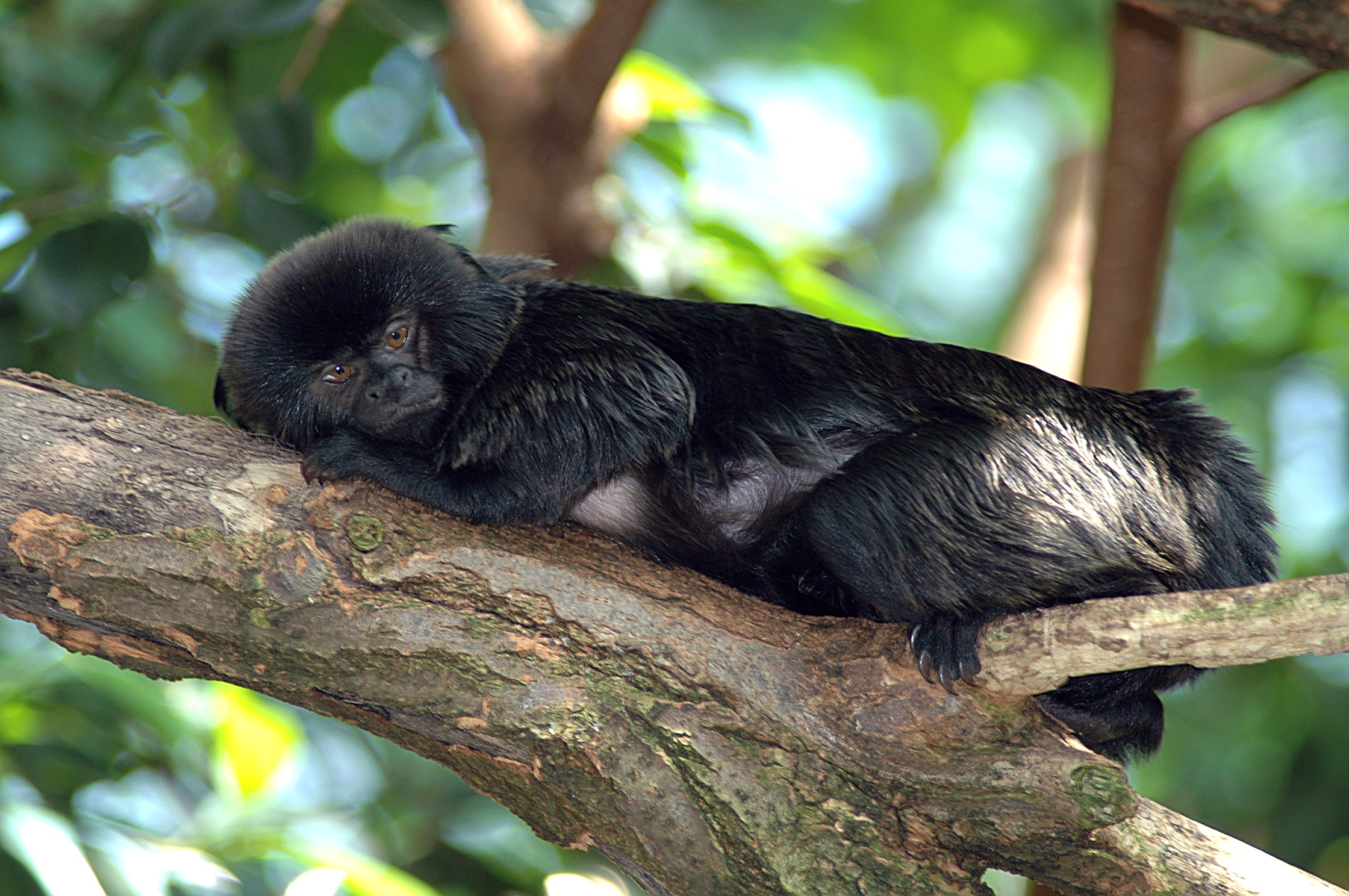- Goeldi's Marmoset
]
status = VU
status_system = iucn3.1
status_ref = IUCN2006|assessors=Heymann, E.W., Defler, T.D., Rodriguez-M., J.V. & Brazil Threatened Species Workshop participants|year=2003|id=3564|title=Callimico goeldii|downloaded=11 May 2006 Database entry includes justification for why this species is near threatened]
trend = unknown

image_width = 200px
regnum =Animal ia
phylum =Chordata
classis =Mammal ia
ordo =Primate s
familia =Cebidae
subfamilia =Callitrichinae
genus = "Callimico"
genus_authority = Miranda Ribeiro, 1922
species = "C. goeldii"
binomial = "Callimico goeldii"
binomial_authority = Thomas, 1904Goeldi's Marmoset or Goeldi's Monkey ("Callimico goeldii") is a small, South American
New World monkey that lives in the upperAmazon Basin region ofBolivia ,Brazil ,Colombia ,Ecuador , andPeru . It is the only species classified in the genus "Callimico", and the monkeys are sometimes referred to as "callimicos".Goeldi's Marmosets are blackish or blackish-brown in color. Their bodies are around 8 to 9 inches long (about 22 cm), and their tails are 10-12 inches long (25-30 cm).
Goeldi's Marmoset was first described in 1904, making it one of the last monkey genera to be described. In older classification schemes it was sometimes placed in its own family Callimiconidae and sometimes in the (now abandoned) family
Callitrichidae , the family containingmarmoset s andtamarin s. More recently, it has been classified intoCebidae , which now contains all the marmosets and tamarins, as well as the capuchin andsquirrel monkey s.Females reach sexual maturity at 8.5 months, males at 16.5 months. The gestation period lasts from 140 to 180 days. Unlike other New World monkeys, they have the capacity to give birth twice a year. The mother carries a single baby monkey per pregnancy, whereas most other species in the family Cebidae usually give birth to twins. The infant is weaned after about 65 days. The life expectancy in captivity is about 10 years.
Goeldi's Marmosets prefer to forage in dense scrubby undergrowth; perhaps because of this, they are rare, with groups living in separate patches of suitable habitat, separated by miles of unsuitable flora. In the wet season, their diet includes fruit, insects, spiders, lizards, frogs, and snakes. In the dry season, they feed on
fungi , the only tropical primates known to depend on this source of food. They live in small social groups (approximately six individuals) that stay within a few feet of one another most of the time, staying in contact via high-pitched calls. They are also known to form polyspecific groups with tamarins, perhaps because Goeldi's Marmosets are not known to have the X-linked polymorphism which enables some indiviuals of other New World Monkey species to see in full tri-chromatic vision [Alison K. Surridge, Nicholas I. Mundy (2002) Trans-specific evolution of opsin alleles and the maintenance of trichromatic colour vision in Callitrichine primates Molecular Ecology 11 (10) , 2157–2169 doi:10.1046/j.1365-294X.2002.01597.x ] .The species takes its name from its discoverer, the Swiss naturalist
Emil August Goeldi .References
External links
*ARKive - [http://www.arkive.org/species/GES/mammals/Callimico_goeldii/ images and movies of the Goeldi's monkey "(Callimico goeldii)"]
* [http://www.eurekalert.org/pub_releases/2004-06/uow-mb061504.php Press release on recent research] on Goeldi's Monkey by scientists at theUniversity of Washington
* [http://pin.primate.wisc.edu/factsheets/entry/goeldi's_monkey Primate Info Net "Callimico goeldii" Factsheet]
* [http://www.zoologie.de/grzimek/image-galleries/freie-wildbahn-und-zoo/primaten/springtamarin Pictures of Goeldi's Monkey]
Wikimedia Foundation. 2010.
